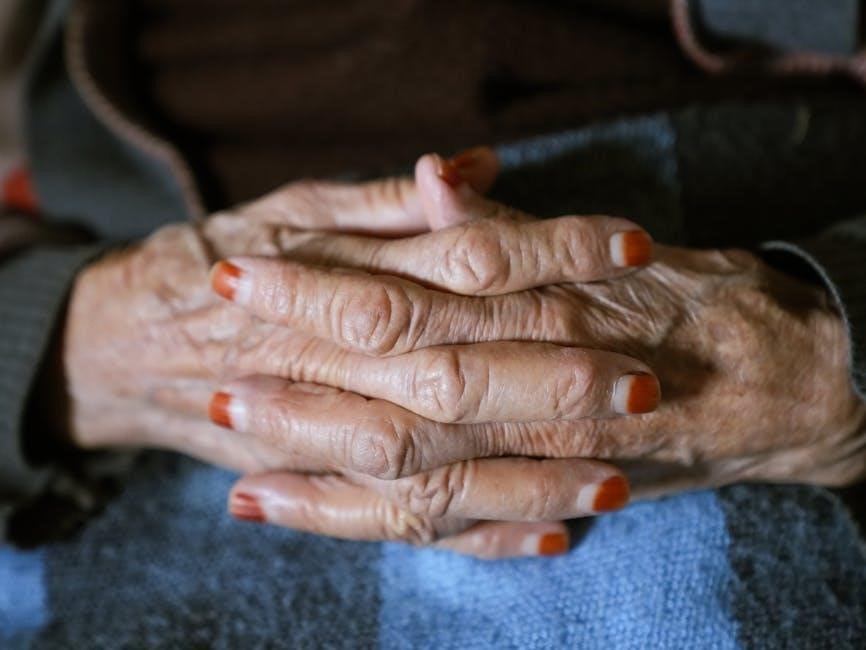Sharon Flake’s The Skin I’m In explores Maleeka Madison’s journey of self-acceptance, tackling bullying, identity, and cultural heritage through her experiences and relationships.
Overview of the Novel
The Skin I’m In by Sharon Flake follows 13-year-old Maleeka Madison, a dark-skinned girl facing bullying for her skin, clothes, and academic success. She meets Miss Saunders, a teacher with a facial birthmark, who challenges her perceptions. Through classroom discussions and personal struggles, Maleeka learns to embrace her identity and overcome self-doubt. The novel explores themes of race, beauty, and empowerment, offering a powerful narrative about self-acceptance and resilience in the face of societal pressures.
Significance of the Title
The title The Skin I’m In symbolizes Maleeka’s journey of self-acceptance and pride in her identity. It reflects her embrace of her dark skin, challenging societal beauty standards and racial stereotypes. The phrase becomes a declaration of empowerment, emphasizing that her skin is not a limitation but a part of who she is. This theme resonates deeply, encouraging readers to embrace their uniqueness and reject external judgments.

The Author’s Inspiration
Sharon Flake wrote The Skin I’m In to uplift dark-skinned girls, addressing their struggles with identity and self-esteem through Maleeka’s story, inspired by real-life experiences.
Sharon Flake’s Motivation
Sharon Flake’s motivation for writing The Skin I’m In stemmed from her desire to empower dark-skinned girls, addressing the societal negativity they often face. She aimed to provide a relatable and uplifting story, highlighting their beauty and strength. Flake hoped to inspire self-acceptance and resilience, offering a narrative that challenges stereotypes and fosters pride in one’s identity. Her work reflects a deep commitment to giving voice to underrepresented experiences, ensuring young readers see themselves positively portrayed in literature.
Addressing Dark-Skinned Girls’ Struggles
In The Skin I’m In, Sharon Flake vividly portrays the daily struggles faced by dark-skinned girls like Maleeka Madison, who endure bullying for her skin tone, homemade clothes, and academic success. The novel highlights the pain of societal beauty standards and the internalized racism that often accompanies them. Through Maleeka’s journey, Flake sheds light on the emotional toll of these experiences, offering a powerful narrative that resonates with young readers navigating similar challenges and societal pressures.

Protagonist’s Journey
Maleeka Madison’s journey in The Skin I’m In is one of profound self-discovery, as she navigates bullying, self-doubt, and societal expectations, ultimately embracing her true identity.
Maleeka Madison’s Transformation
Maleeka’s transformation begins with her struggles as a dark-skinned girl facing bullying for her homemade clothes, good grades, and skin color. With the guidance of Miss Saunders, she learns to embrace her identity. By the end of the novel, Maleeka asserts her self-worth, declaring, “Black is the skin I’m in!” This journey highlights her growth from self-doubt to empowerment, showcasing the power of self-acceptance and inner strength.
The Role of Miss Saunders
Miss Saunders, a teacher with a facial birthmark, plays a pivotal role in Maleeka’s life. Her unconventional methods and open discussions challenge students to rethink identity and beauty. By sharing her own struggles, she fosters a supportive environment, helping Maleeka and her peers embrace their uniqueness. Miss Saunders’ influence is transformative, encouraging self-acceptance and empowerment, making her a catalyst for change in Maleeka’s journey.
Overcoming Bullying and Self-Doubt
Maleeka faces relentless bullying due to her dark skin, homemade clothes, and academic prowess. Her classmates’ taunts fuel her self-doubt, making her ashamed of her identity. However, with Miss Saunders’ guidance, she learns to confront these challenges. By standing up for herself and asserting her pride in her skin, Maleeka gradually overcomes the internalized negativity, embracing her true self and finding strength in her uniqueness.

Themes and Metaphors
The novel explores themes of identity, self-acceptance, and cultural hybridity, using skin as a metaphor for the complexities of racial and social identity.
Identity and Self-Acceptance
The novel vividly portrays Maleeka Madison’s journey toward embracing her dark skin and individuality in a world that often criticizes her. Through her struggles and triumphs, Flake highlights the importance of self-acceptance, encouraging readers to love themselves despite societal pressures. Maleeka’s growth symbolizes the universal quest for identity, showing how internal strength and support from others, like Miss Saunders, can lead to empowerment and confidence in one’s unique qualities. The story emphasizes that true beauty lies within, fostering resilience against discrimination and self-doubt.
Skin as a Metaphor for Cultural Hybridity
Skin as a Metaphor for Cultural Hybridity
In The Skin I’m In, skin serves as a powerful metaphor for cultural hybridity, reflecting the blending of identities and experiences. Maleeka’s dark skin symbolizes her heritage and the richness of her cultural background, while Miss Saunders’ birthmark represents individuality and diversity. The novel explores how skin becomes a canvas for societal perceptions, yet ultimately emphasizes its role in defining personal and cultural identity. Through this metaphor, Flake highlights the beauty of uniqueness and the strength found in embracing one’s roots and complexities. Skin becomes a symbol of both struggle and pride, deeply intertwined with cultural narratives.
Cultural and Social Context
The novel examines the cultural and social challenges faced by dark-skinned girls, highlighting socioeconomic disparities and the impact of societal beauty standards on self-esteem in their community.
The Struggles of Dark-Skinned Girls
Maleeka faces relentless taunts about her dark skin, homemade clothes, and academic achievements. Her peers mock her, reflecting societal biases that equate beauty with lighter skin. These struggles lead to self-doubt and isolation, as she grapples with internalized racism and the pressure to conform to unrealistic standards. The novel vividly portrays the emotional toll of such experiences, emphasizing the need for self-acceptance and resilience in overcoming these challenges.
Socioeconomic Challenges in the Narrative
Maleeka’s struggles are compounded by socioeconomic realities, as her homemade clothes and good grades set her apart. Her mother’s bonus to buy new clothes highlights financial strains, while Maleeka’s pride in her achievements contrasts with peers’ materialism. The narrative subtly explores how economic status influences self-perception and social dynamics, adding depth to Maleeka’s journey of self-acceptance and empowerment in a world where appearances and background often define worth.
Key Scenes and Chapters
Chapter 1 introduces Maleeka’s world, showcasing her struggles with identity and bullying. Chapter 4 highlights her facing discrimination, while Chapter 5 marks pivotal moments in her transformation and growth.
Chapter 1 of The Skin I’m In introduces Maleeka Madison, a young girl grappling with her dark skin and societal expectations. The scene sets the stage for her struggles, showcasing her internal conflict and the external pressures she faces at school. Through vivid descriptions, Flake paints a picture of Maleeka’s world, where her homemade clothes and academic prowess make her a target for bullying. This chapter establishes the foundation for her journey toward self-acceptance and empowerment.
Chapter 4: Facing Discrimination
In Chapter 4 of The Skin I’m In, Maleeka confronts harsh discrimination at school. Her peers mock her dark skin, homemade clothes, and academic success, intensifying her self-doubt. The chapter highlights the pain of bullying and societal beauty standards, pushing Maleeka to question her worth. This pivotal moment in the narrative underscores the struggles faced by dark-skinned girls and sets the stage for Maleeka’s eventual empowerment and self-acceptance, marking a turning point in her emotional journey.
Chapter 5: Turning Points in Maleeka’s Life
Chapter 5 of The Skin I’m In marks a significant shift in Maleeka’s journey. With Miss Saunders’ guidance, she begins to embrace her identity and resist bullying. A shopping trip with her mother symbolizes newfound confidence, while classroom discussions challenge stereotypes. This chapter highlights Maleeka’s growing self-awareness and the transformative power of supportive relationships, setting her on a path toward self-acceptance and empowerment, fundamentally altering her perspective on herself and her place in the world.

Impact of the Teacher-Student Relationship
Miss Saunders’ influence empowers Maleeka, fostering confidence and self-acceptance, while transformative classroom discussions challenge stereotypes, helping her embrace her identity and overcome societal pressures effectively.
Miss Saunders’ Influence
Miss Saunders, a teacher with a noticeable birthmark, becomes a pivotal figure in Maleeka’s life. Her unique appearance and confident demeanor inspire Maleeka to embrace her own identity. Through engaging classroom discussions, Miss Saunders challenges stereotypes and fosters a deeper understanding of self-worth. Her unwavering support and belief in Maleeka’s potential help her overcome insecurities and bullying, encouraging Maleeka to stand tall in her own skin and celebrate her individuality with confidence and pride.
Transformative Classroom Discussions
Miss Saunders’ dynamic teaching style sparks meaningful conversations about identity and self-acceptance. Her discussions challenge stereotypes, encouraging students to reflect on their own biases and prejudices. By creating a safe space for dialogue, she helps Maleeka and her peers explore themes of cultural hybridity and personal growth. These discussions empower students to reevaluate their perceptions of beauty and identity, fostering a sense of unity and understanding that transcends superficial differences, ultimately transforming their classroom into a space of mutual respect and discovery.
Personal Growth and Empowerment
Maleeka’s journey from self-doubt to empowerment highlights her overcoming insecurities about her skin and identity. With Miss Saunders’ guidance, she learns to embrace her uniqueness and stand confidently.
Maleeka’s Assertion of Identity
Maleeka’s transformation is marked by her bold assertion of identity. She transitions from hiding her true self to embracing her dark skin, rejecting societal standards. Through pivotal moments, she discovers strength in her uniqueness, refusing to let others define her worth. Miss Saunders plays a crucial role, empowering Maleeka to recognize her value and confidently assert, “Black is the skin I’m in!” This journey underscores the power of self-acceptance and individuality.
Embracing “The Skin I’m In”
Maleeka’s embrace of her identity culminates in a powerful declaration, “Black is the skin I’m in!” This phrase symbolizes her acceptance and pride in her heritage. Through her journey, she learns to reject societal beauty standards and internalized racism, finding empowerment in her uniqueness. Miss Saunders’ influence and supportive relationships help her recognize her worth, ultimately leading to a deeper self-love and confidence. This embrace of her true self marks a triumphant conclusion to her personal growth.
Sharon Flake’s The Skin I’m In leaves a lasting message of self-acceptance, empowering dark-skinned girls. Its legacy endures as a poignant reminder of identity and resilience, celebrated in literature.
The Novel’s Message Today
The Skin I’m In remains a powerful voice for self-acceptance, addressing identity and cultural hybridity. Its message resonates today, inspiring young readers to embrace their uniqueness and challenge societal beauty standards. The novel’s exploration of skin as a metaphor for cultural complexity continues to foster important discussions about race, identity, and empowerment, making it a timeless and impactful work in contemporary literature.
Reception and Reviews
The Skin I’m In has received widespread acclaim for its authentic portrayal of a young girl’s struggle with identity and self-acceptance. Critics praise its raw honesty and relatable characters, noting its ability to address sensitive topics with grace. Readers have highlighted the novel’s emotional depth and transformative message, making it a beloved and impactful read. Its positive reception underscores its importance in fostering self-love and resilience among young readers, particularly dark-skinned girls facing societal challenges.
